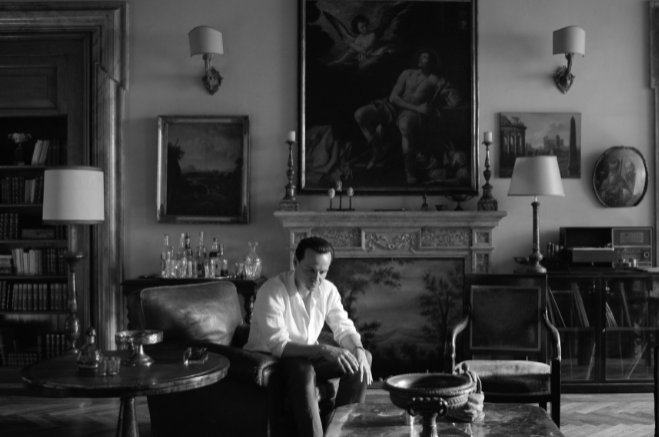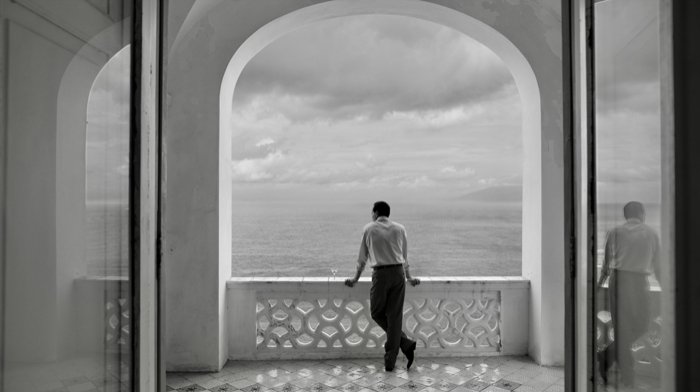
Meet 'Ripley,' Netflix's incarnation of Patricia Highsmith's 'The Talented Mr. Ripley,' where the protagonist's deft evasion of justice intertwines with the haunting narratives of Caravaggio
"The Talented Mr. Ripley" is undeniably talented, but it's his knack for ingeniously evading the crimes he commits that truly sets him apart. Netflix's recent series "Ripley," which premiered in April, masterfully highlights this aspect. Just when you believe he's finally cornered, Mr. Ripley astounds with his ability to slip through the cracks, leaving viewers in awe of his cunning.
The character of Tom Ripley, whom we got to know better thanks to Anthony Minghella's 1999 movie with Matt Damon as Tom Ripley, is taken from Patricia Highsmith's novel of the same name "The Talented Mr. Ripley," first published in 1955. Set primarily in the 1950s, the story follows Tom Ripley, a complex and morally ambiguous character struggling to find his place in the world. We know him as a talented imposter capable of assuming various identities with ease. When allowed to travel to Italy to persuade a wealthy businessman's son, Dickie Greenleaf, to return to his country, the U.S., he seizes the chance to build a new character.
As Tom becomes entangled in Dickie's world of privilege and sophistication, he becomes increasingly obsessed with him. He yearns for Dickie's lifestyle, his charm, and also a bit of his girlfriend. However, Tom's admiration soon turns into envy and resentment as he realizes he can never truly be Dickie. That drives him crazy, making him self-delusional, and a murderer.
In this new remake that came 25 years later, Andrew Scott portrays Tom Ripley, Johnny Flynn plays Dickie, and Dakota Fanning takes on the role of Marge Sherwood in Netflix's limited series "Ripley." It is an arthouse production of clear auteurism. Created, written and directed by Steven Zaillian, known for "Schindler’s List" and "The Night Of," the eight-episode "Ripley" offers a grotesque kind of "la dolce vita," starting in a small seaside picturesque village on the Amalfi Coast and progressing through Naples, Rome, Palermo and Venice, all portrayed as dull, restless and unsettling.

In this context, Zaillian's take on the novel promises many innovations in cinematography, as a completely fresh execution. Firstly, the decision to shoot the series entirely in black and white has a significant impact, depicting Tom Ripley's dark world and his journey toward becoming a murderer. Additionally, the bold choice to shoot in black and white in a landscape as colorful as Italy is quite daring. Of course, this risk pays off.
For this, comparing this series to the 1999-made "The Talented Mr. Ripley" would be wrong. Zaillian has strictly adhered to the book, trying to capture its dark atmosphere. As he mentioned in an interview, seeing the cover of Highsmith's book in black and white inspired him. Therefore, we can say it's a more faithful adaptation of the book. However, those who haven't read the book may have some basic knowledge of the character Tom Ripley, portrayed by Matt Damon in the more well-known film version. But Zaillian's production suggests much more than that. Perhaps the episodes are longer than necessary, but throughout the series, the character's evolution, along with the cinematography, symbols, and the enchanting operas performed by Enrico Caruso is a kind of chilling feast that most we see in the "Last Supper."
Thematic depths
One of the major thematic supports in the series is known for his dramatic storytelling and "chiaroscuro," the use of strong contrasts between light and dark in art, in the works of Italian painter Michelangelo Merisi da Caravaggio. After Dickie Greenleaf introduces Tom Ripley to Caravaggio's works that are located in the country's various chapels, viewers inevitably begin to establish a connection between Ripley and Caravaggio, as Ripley perceives and clumsily executes everything he's influenced by in its purest form. Caravaggio's own life, being brought to trial 11 times and spending the rest of his life as a fugitive after killing a man in 1606, collapsing and dying in the summer of 1610 while traveling back to Rome to seek a pardon from the pope, also sends many symbolic messages about Ripley's character – a foreshadowing. Also, At the same time, the screen transitions from the actor who portrayed Caravaggio in the series to Ripley also confirm this.
On the other hand, the other most frequently seen motifs in the series are the top-down panoramic shots of inside-building staircases. While watching the series, you can see many staircase scenes, with some minutes devoted to these structures. These scenes not only symbolize the architectural structures but also represent Ripley's rise and, although not seen in the series, ultimate downfall.
Perhaps one of the most important thematic support is the titles of the episodes. Each episode's title refers to a cultural theme from mythology to cinema, but especially the first episode, "A Hard Man to Find," reminded me of Flannery O'Connor's 1953 short story "A Good Man is Hard to Find." The story's central message about the scarcity of moral goodness in the world resonates within the series through Ripley's character. O'Connor suggests that true virtue is elusive and often overlooked, while the capacity for evil resides within everyone, much like how the evil force in Ripley's character easily surfaces.
Tom Ripley's transformation from a young man struggling to find his place in the world and initially a rather insignificant character in New York is masterfully depicted in the series. As a talented imposter capable of assuming various identities with ease, when allowed to travel to Italy to persuade a wealthy businessman's son, Dickie Greenleaf, to return home, he seizes the chance to escape his meaningless life. The series also includes some ironies and dialogues that highlight how awkward it is for an American to live in Europe.
Going to Europe, being part of this mission and encountering this new world he had never met before offered him a serious desire. The feeling of rejection, insignificance and not belonging is so intense that the desire to be someone escalates rapidly after meeting Greenleaf. Combined with Andrew Scott's mesmerizing portrayal of Ripley, all these thematic, cinematographic and narrative elements could be a beautiful attempt at bringing the novel to life.
For those who want to watch a series filled with Poe-esque murders, Alfred Hitchcock vibes, and paintings ranging from Picasso to Caravaggio, "Ripley" is a great choice.
